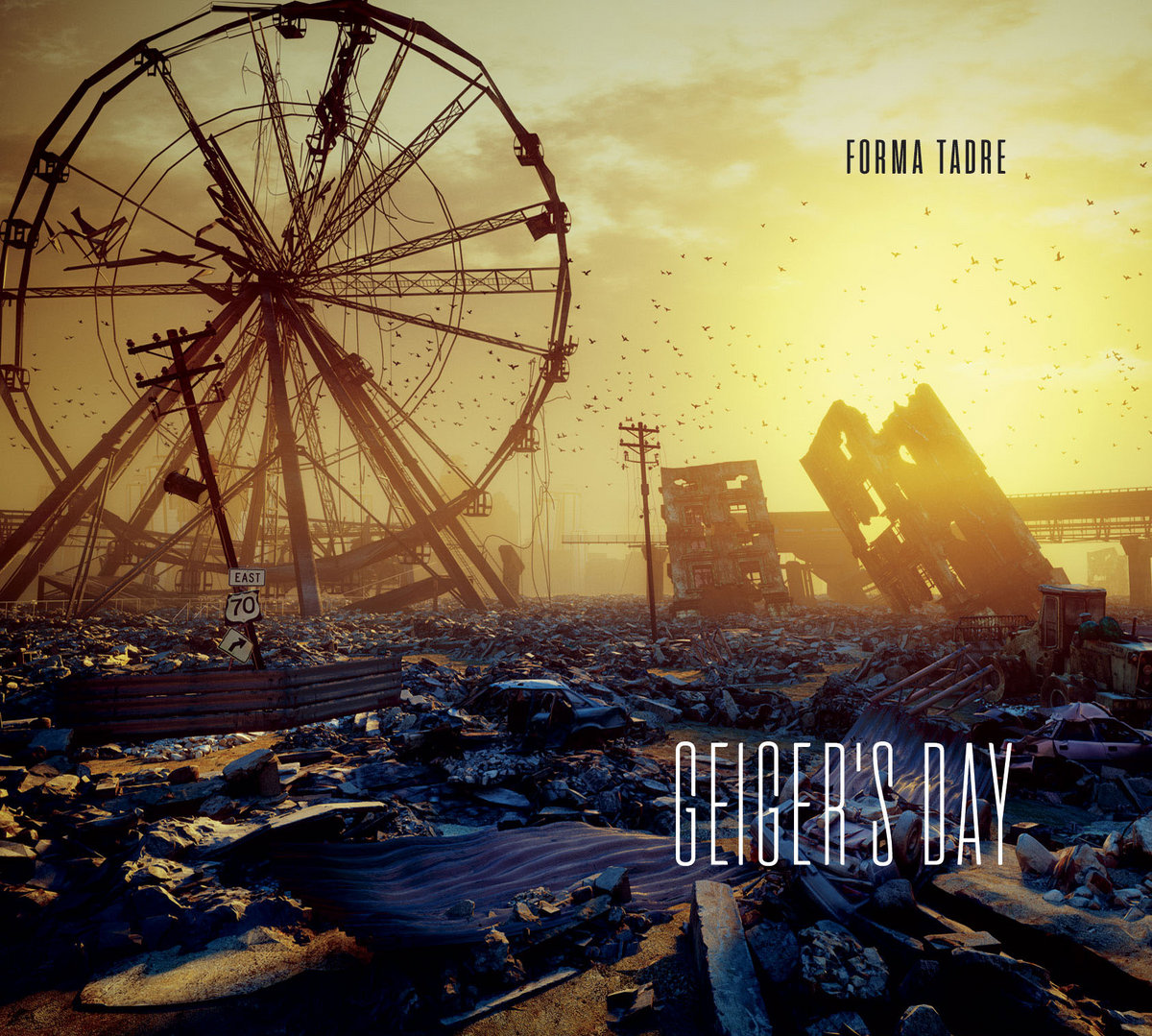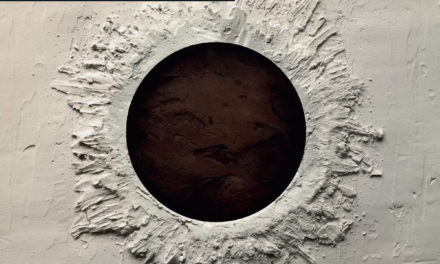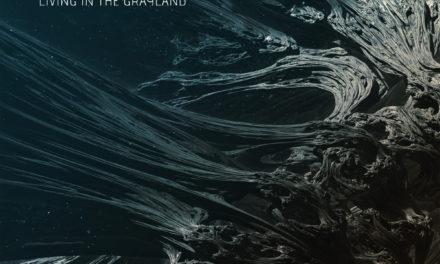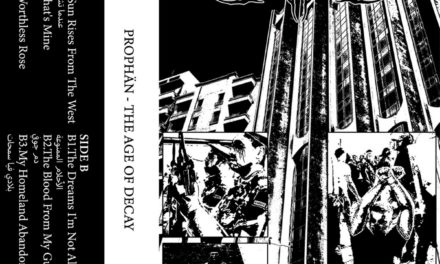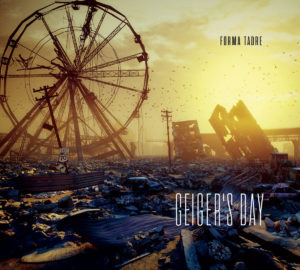
Forma Tadre
Geiger’s Day
self-released
Longtime readers of this site know the esteem in which we hold Forma Tadre, as well as Andreas Meyer’s work outside of that project. Each of the three extant Forma Tadre LPs feel as though they could have been created by entirely different projects, each with a radically different approach to electro-industrial, ambient, and orchestral music, and if one cares to include the early EP from the days before Forma Tadre was a solo project, that range of sound expands even further. New LP Geiger’s Day consists primarily of material recorded shortly after 1998’s divisive Automate, and as such offers the sort of connective tissue or missing link between Meyer’s previously released work, casting a new historical light on the Forma Tadre catalog for die-hards, as well as another immaculately sculpted work for more general audiences.
The name, art, and track titling of Geiger’s Day all clearly point to the theme of post-nuclear landscapes: barren, deserted, perhaps strangely picturesque, but still dangerously active at the sub-atomic level. If you’re at all curious as to whether or not that theme finds its way into the sound design, well, you’re likely already familiar with the way sea and space sounds found their way into Navigator and thus have a solid hunch as to the answer. The terse clicks and pops of Geiger counters, hazmat suit muting of human breath and voice, and plenty of other nuclear-adjacent sounds guide and shape Geiger’s Day, neatly recreating contemporaneous glitch and IDM. That said, the ambient mood of Automate is carried forward in much of the record – Geiger’s Day is certainly uses a busier and more active sonic palette than its predecessor, but it holds with that record’s contemplative and simple programming, sometimes hopeful and sometimes mournful in its minimalism.
For those like myself who were stunned by the orchestral ambitions and execution of 2008’s The Music Of Erich Zann (one of the most beautiful records of Lovecraft-inspired music, and trust me – I’ve heard plenty), Geiger’s Day offers a clear link between the austerity of Automate and that record’s lush palette. Works like “Radiation Rose” and “Once Upon A Time There Were Cities” are still predominantly built upon familiar electronic instrumentation but find Meyer testing his hand at integrating horns and strings (acoustic or otherwise). Perhaps more important than the individual instrumentation choices, though, are the arrangements; time and again Geiger’s Day builds and releases tremendous amounts of energy and drama while still retaining a relatively ‘quiet’ and artful character. Meyer’s never made any secret of his admiration for Kraftwerk (see his recent K.I. Companion project), and here he’s able to find the same locus of kinetic energy and clarity as those masters.
As Meyer told us in an interview in 2007, Automate‘s theme of corporate engineered parks and landscapes grew out of an interest in how environments subtly engineer desired human responses. Geiger’s Day points to environments shaped, in turn, by those same engineered responses (“We were only following orders”, “We cannot permit a missile gap”), but rather than focusing on those as a site of mourning, as the Cities Last Broadcast project does, or with nostalgic reverie as Jean-Marc Lederman recently did, Meyer finds an impassive, Ballard-like beauty in that which we might leave in our wake. Radioactivity is still activity, possibly less harmful than that of the human variety.

